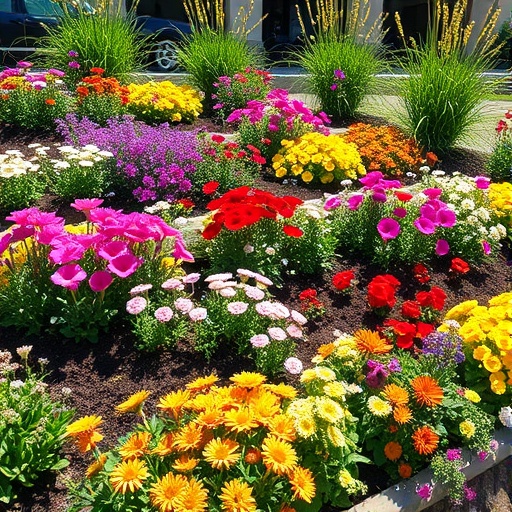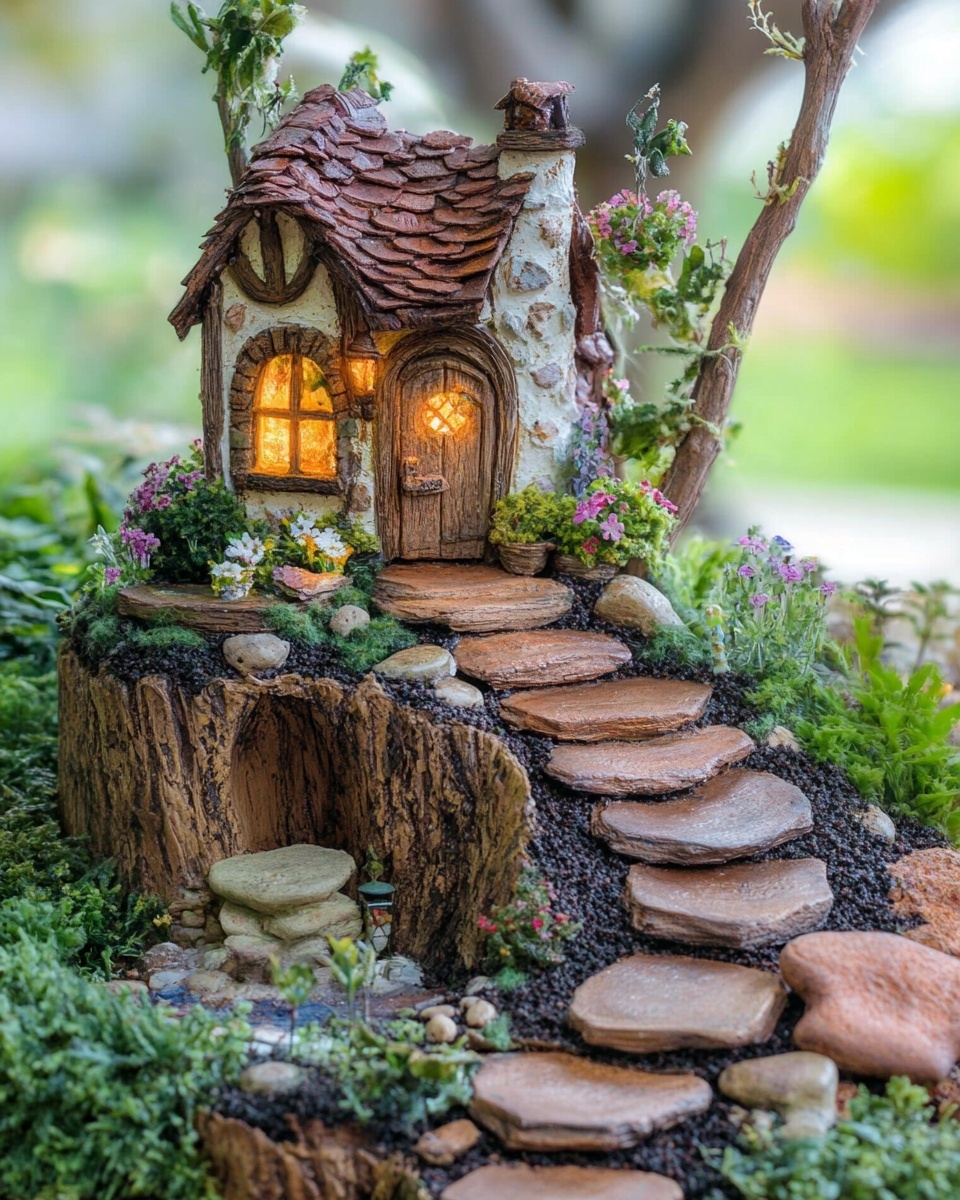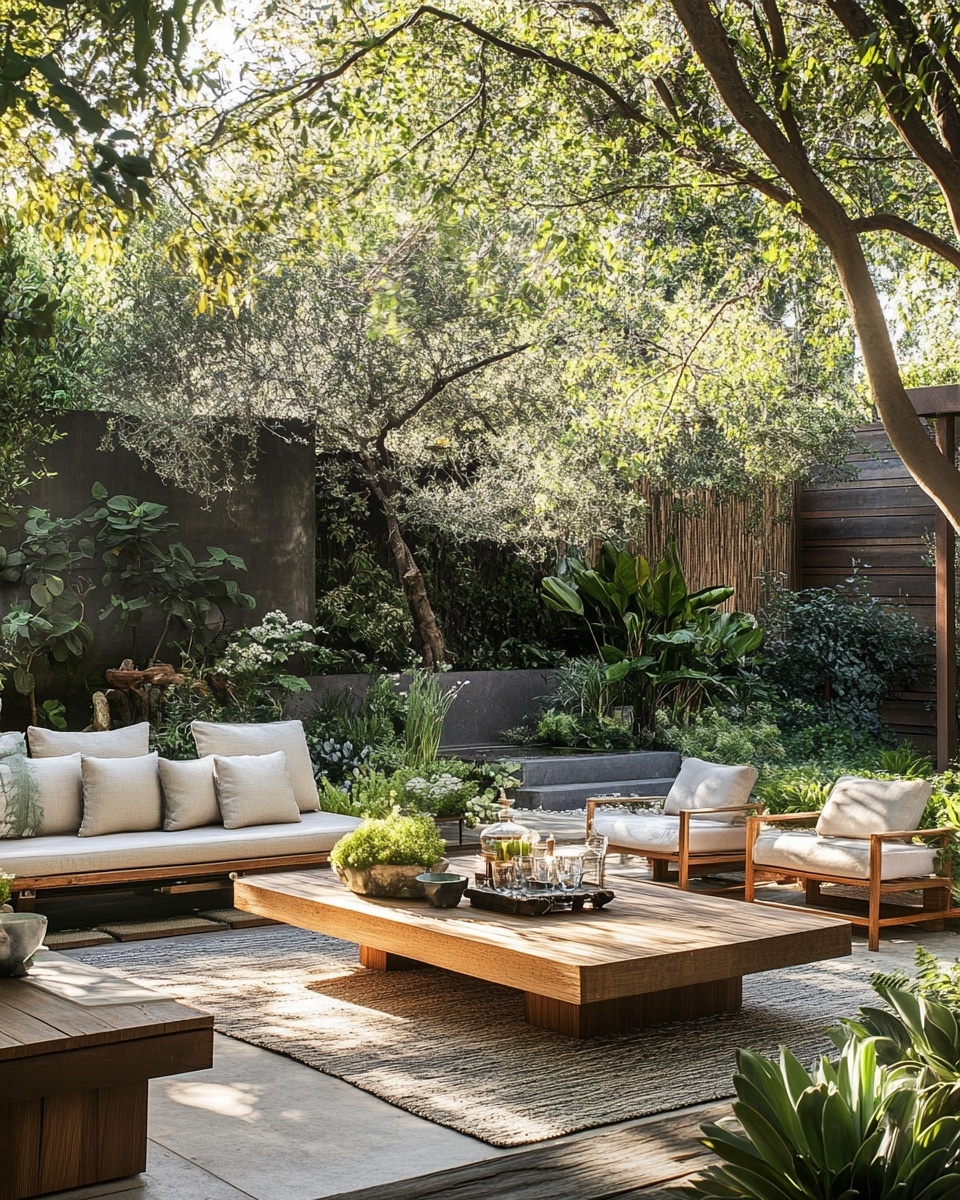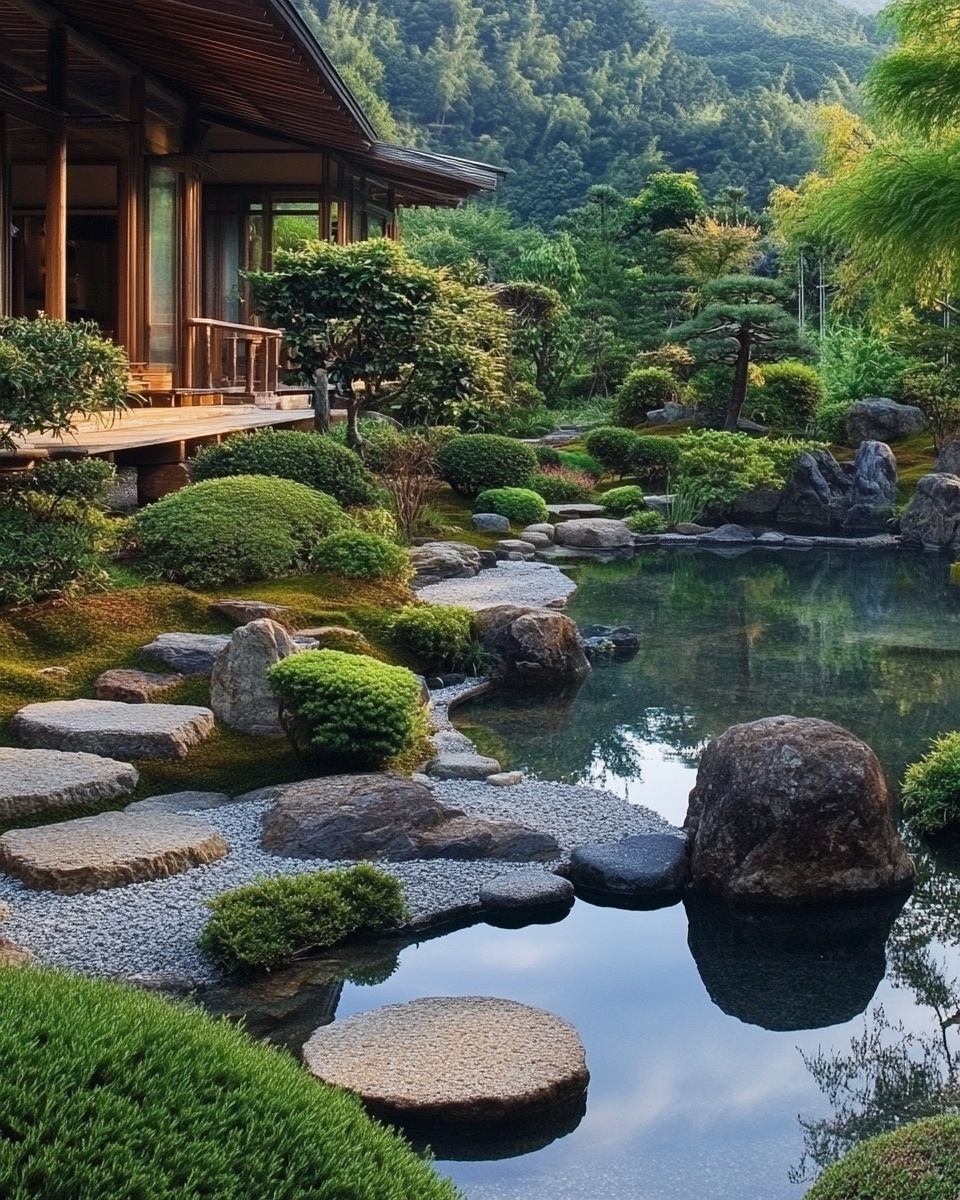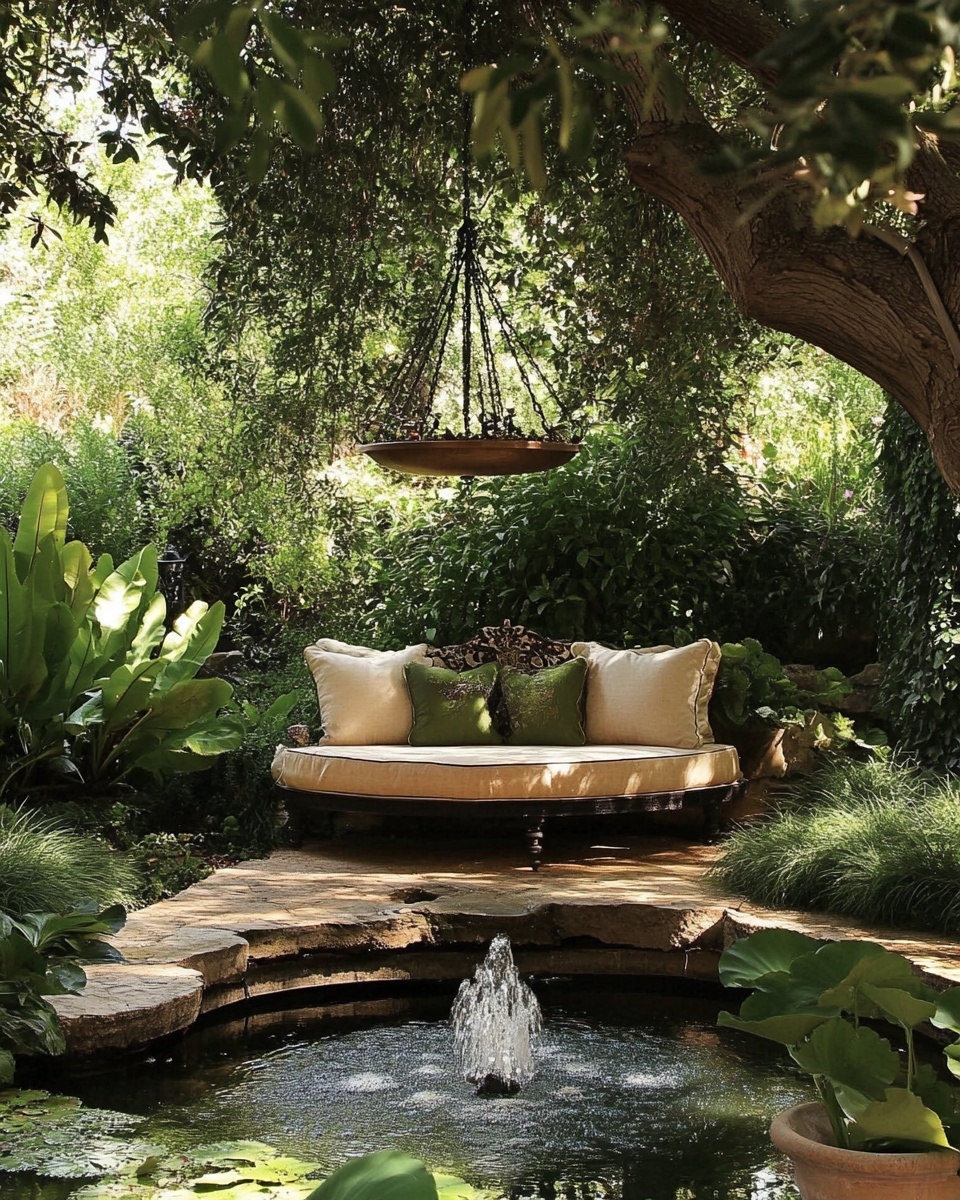Introduction
Did you know that a staggering 70% of home gardeners feel overwhelmed by the prospect of creating a visually coherent and thriving outdoor space? It’s a common misconception that stunning garden aesthetics are reserved for professional landscapers. But what if I told you that with a few strategic flower bed ideas, anyone can transform their yard into a breathtaking, multi-dimensional masterpiece? This guide will unveil the secrets to designing layered flower beds that not only captivate the eye but also maximize plant health and biodiversity. Forget haphazard plantings; we're diving deep into data-driven design strategies that will elevate your gardening game and create vibrant, continuous blooms.
Tools & Materials Needed
Embarking on your layered flower bed journey requires a thoughtful selection of tools and materials. Having the right equipment makes the process smoother, more efficient, and ultimately, more enjoyable.
- Shovel or Spade: Essential for digging, turning soil, and transplanting. Eco-friendly tip: Look for tools with recycled plastic handles or sustainably sourced wooden handles.
- Garden Fork: Perfect for aerating compacted soil and mixing amendments without damaging existing plant roots.
- Gloves: Protect your hands from dirt, thorns, and blisters. Choose durable, breathable options.
- Garden Rake: For leveling soil, spreading mulch, and clearing debris.
- Wheelbarrow or Garden Cart: Invaluable for moving soil, compost, and plants around your garden. A sturdy tarp can be a budget-friendly alternative for smaller projects.
- Measuring Tape/Yard Stick: Crucial for planning plant spacing and bed dimensions. Precision makes a difference!
- Hose with Adjustable Nozzle or Watering Can: For precise watering, especially for new plantings.
- Organic Compost/Well-Rotted Manure: The cornerstone of healthy soil. Aim for at least 2-4 inches to enrich your bed. Data shows that amending soil with compost can increase water retention by up to 20% and nutrient availability by 30%.
- Slow-Release Granular Fertilizer: Provides a steady supply of nutrients as plants establish.
- Selected Plants: This is where your flower bed ideas come to life! Focus on diverse heights, textures, and bloom times. Consider perennials for long-term impact and annuals for seasonal splashes of color.
- Mulch (Wood Chips, Shredded Bark, Straw): Suppresses weeds, retains moisture, and regulates soil temperature. A 2-inch layer of mulch can reduce watering needs by 30-50%.
- Edging Material (Optional): Define your bed with bricks, stone, plastic, or metal edging for a polished look. For a budget-friendly option, consider a cleanly cut trench edge!
Time & Effort Overview
Creating a layered flower bed is a rewarding project, but it does require an initial investment of time and effort. For a new 50-square-foot flower bed, expect to dedicate:
- Planning & Design: 2-4 hours (This is crucial for successful flower bed ideas!)
- Site Preparation (Weeding, Soil Amendment): 4-8 hours, depending on soil condition and existing vegetation.
- Planting: 3-6 hours, depending on the number and size of plants.
- Initial Watering & Mulching: 1-2 hours.
Total Initial Time Investment: Roughly 10-20 hours for a new bed.
Ongoing Maintenance: A well-designed layered bed, particularly with perennials, can be surprisingly low maintenance. Expect 1-2 hours per week during peak growing season for watering, deadheading, and light weeding. This is significantly less than the 3-4 hours per week often required for vegetable gardens of similar size.
Difficulty Level: Intermediate. While the individual tasks are beginner-friendly, the conceptual design and plant selection for effective layering elevate it to an intermediate challenge. However, with this guide, you’ll be tackling it like a pro!
Step-by-Step Gardening Process
Let's break down the journey to your dream layered flower bed into manageable, rewarding steps.
Choosing Your Location and Defining the Shape
First, select a spot that receives adequate sunlight for your chosen plants – most flowering plants need at least 6 hours of direct sun. Observe the sun's path throughout the day. Once you have a spot, use a garden hose, rope, or even flour to outline your desired bed shape. Consider irregular, flowing shapes for a more natural look. Don't worry if it's not perfect initially; you can always adjust!
Preparing the Soil for Optimal Growth
This is arguably the most critical step for any successful flower bed. Remove all weeds, either by hand, with a hoe, or by smothering them with cardboard and mulch. Dig down about 8-12 inches, breaking up any compacted soil. Incorporate a generous amount of organic matter – compost, aged manure, or well-rotted leaves. A good rule of thumb is to mix in an amount equal to about 25-30% of your current soil volume. This enriches the soil, improves drainage, and provides a fertile foundation for your flower bed ideas to flourish.
Planning Your Layers: "Tall in the Back, Short in the Front"
Now for the fun part: plant placement! The core principle of layered design is to place taller plants at the back of the bed (furthest from the primary viewing angle), medium-height plants in the middle, and shorter plants or ground cover at the front.
- Layer 1 (Back): Think drama and height! Tall ornamental grasses, delphiniums, foxgloves, or climbing roses (with support). These form your backdrop.
- Layer 2 (Middle): This is your main act. Coneflowers, hostas, salvia, hydrangeas, or smaller shrubs add bulk and continuous interest.
- Layer 3 (Front): Frame your bed with low-growing plants like alyssum, petunias, creeping phlox, or sedum. These spill over the edge, softening the transition from the bed to the lawn or pathway.
Consider bloom times too! Choose plants that flower at different points in the season to ensure continuous color. For instance, pairing spring-blooming tulips with summer-blooming coneflowers and fall-blooming asters.
Arranging and Planting Your Selections
Before you dig individual holes, arrange your potted plants on the prepared soil according to your layering plan. Take a step back and view them from different angles. Are there any gaps? Does the color flow? Does it feel balanced? Adjust as needed until you're happy with the arrangement. Once finalized, dig holes that are as deep as the root ball and twice as wide. Gently remove plants from their containers, loosen any circling roots, and place them in the holes. Backfill with soil, firming gently around the base of the plant.
Watering and Mulching for Establishment
Immediately after planting, water thoroughly until the soil is consistently moist, but not waterlogged. This helps settle the soil around the roots. Once watered, apply a 2-4 inch layer of organic mulch around all your new plants, keeping it a few inches away from plant stems to prevent rot. This step is a game-changer for weed suppression and moisture retention, vital for establishing your new flower bed ideas.
Growth & Care Tips
Consistent care ensures your layered flower bed thrives and remains a focal point in your garden.
- Watering Frequency: New plantings require consistent moisture. Water daily for the first week, then transition to every 2-3 days, feeling the top inch of soil. Once established (typically after 4-6 weeks), most plants need about 1 inch of water per week, either from rain or irrigation. Deep, infrequent watering encourages deeper root growth, making plants more drought-tolerant. Studies show that shallow, frequent watering leads to vulnerable, shallow root systems in over 75% of ornamental plants.
- Sunlight Exposure: Regularly observe your plants. Are they thriving or looking stressed? Shady spots can be too dark for sun-loving plants, leading to leggy growth and sparse blooms. Conversely, sun-sensitive plants in full sun might show scorched leaves. Adjust with shade cloths for intense heat or consider transplanting if a plant is clearly mismatched to its light conditions.
- Pruning & Deadheading:
- Deadheading: Remove spent flowers regularly. This redirects the plant's energy from seed production back into producing more blooms, extending the flowering season.
- Pruning: Trim back overgrown or diseased foliage to maintain plant health and shape. For evergreen shrubs in your layers, prune in late winter/early spring before new growth begins.
- Fertilization: With well-prepared, compost-rich soil and a slow-release fertilizer at planting, your plants might not need additional feeding for their first year. After that, a light application of balanced granular fertilizer in early spring, or a liquid feed every 4-6 weeks during the growing season, can boost vigor. Always follow product instructions to avoid over-fertilization, which can burn roots.
- Pest Prevention: Healthy plants are naturally more resistant to pests. Monitor your beds regularly for any signs of trouble (chewed leaves, sticky residue, discolored foliage). Address issues early. Introduce beneficial insects like ladybugs, use organic sprays (neem oil), or simply hand-pick larger pests. Prompt identification can save your entire bed!
Eco-Friendly & Sustainable Alternatives
Gardening responsibly benefits both your garden and the planet. Here's how to make your layered flower bed more sustainable:
- Compost Everything: Instead of chemical fertilizers, rely on your own homemade compost. It improves soil structure, provides essential nutrients, and reduces landfill waste. Set up a simple compost bin for kitchen scraps and garden debris.
- Water Conservation: Implement drip irrigation or soaker hoses to deliver water directly to the root zone, minimizing evaporation. Collect rainwater in barrels for irrigation; plants prefer rainwater anyway due to its natural pH. Mulch, as mentioned, is your best friend for moisture retention.
- Native Plants: Incorporate native plants into your flower bed ideas. They are naturally adapted to your local climate and soil, requiring less water, fertilizer, and pest control. They also support local wildlife and pollinators.
- DIY Pest Control: Avoid synthetic pesticides. Opt for natural solutions like neem oil, insecticidal soap, or companion planting. Marigolds, for example, deter nematodes and other pests when planted near susceptible plants.
- Small Space Solutions: Don't have a large yard? Layered gardening is perfectly adaptable!
- Balcony Gardens: Use tiered planters or vertical garden walls to create height and dimension. Taller plants can go in larger pots at the back, with trailers or shorter plants spilling over the front of the pot. Check out our guide on vertical balcony herb garden design ideas for inspiration.
- Pots & Containers: Group pots of varying heights and sizes together to create a layered effect. Ensure good drainage.
- Vertical Gardens: Install a vertical gardening system on a wall or fence, allowing you to grow upward and create visual layers in a compact footprint.
Creative Ideas & Uses
Layered flower beds aren't just for growing plants; they're canvases for creativity!
- Color Harmonies & Contrasts: Play with color theory. Use analogous colors (e.g., blues, purples, pinks) for a soothing, cohesive look, or complementary colors (e.g., orange and blue, yellow and purple) for dynamic pops. A data point to consider: Gardens with a balanced mix of warm and cool colors are often perceived as more inviting and exciting!
- Seasonal Interest: Design your flower bed ideas to feature plants that shine in different seasons. Early spring bulbs, followed by mid-summer perennials, and then late-season asters and mums, ensure year-round appeal. Incorporate evergreen shrubs or ornamental grasses for winter structure.
- Repurposing garden materials: Use old wheelbarrows as planters in your layers, stack old tires (painted brightly) for tiered planting, or even turn old wooden crates into elevated mini-beds. This adds character and sustainability.
- Theme Gardens: Create a sensory garden with fragrant flowers and herbs (lavender, mint, rosemary), a pollinator garden to attract bees and butterflies, or a monochromatic garden using different shades of a single color for sophisticated elegance.
- Garden Art Integration: Weave in statuary, bird baths, wind chimes, or decorative stakes among your layers. These elements add focal points and personal touches to your garden narrative. Consider how they will be viewed from different heights within your layered design. You can find beautiful inspiration for garden structures and art on Pinterest: https://www.pinterest.com/janatjanay47/.
Common Mistakes to Avoid
Even experienced gardeners make mistakes. Being aware of these pitfalls can save you time, money, and heartache.
- Overwatering or Underwatering: A leading cause of plant death. Overwatering causes root rot in 60% of cases, while consistent underwatering leads to stunted growth and wilting. Always check soil moisture before watering.
- Ignoring Soil Preparation: Planting in unamended, compacted soil is like building a house on sand. Poor soil leads to poor drainage, nutrient deficiencies, and struggling plants. Invest time here; it pays dividends.
- Improper Plant Spacing: Planting too close together leads to overcrowding, poor air circulation (increasing disease risk), and competition for resources. Planting too far apart leaves sparse areas and encourages weeds. Research mature plant sizes and space accordingly for your flower bed ideas.
- Neglecting Sunlight Requirements: A plant needing full sun will not thrive in shade, and vice versa. Matching plants to their light needs is fundamental. This oversight accounts for nearly 40% of plant failures in new gardens.
- Buying Plants on Impulse: While tempting, selecting plants solely based on their in-store beauty without considering their needs (light, water, soil, mature size) or how they fit into your layered design often leads to disappointment. Plan first, then buy.
- Not Mulching: Skipping mulch means more weeding, more watering, and less consistent soil temperatures. It's a simple step with significant benefits.
Maintenance & Storage Tips
Long-term success with your layered flower bed depends on thoughtful ongoing care and smart storage.
- Seasonal Care:
- Spring: Clean up winter debris, cut back dead perennial foliage, and apply a fresh layer of compost and mulch. This is also a great time to divide overcrowded perennials.
- Summer: Regular deadheading keeps blooms coming. Monitor for pests and diseases. Ensure consistent watering during dry spells.
- Fall: Cut back most perennials after the first hard frost (some, like ornamental grasses, can be left for winter interest). Plant spring bulbs. A final layer of mulch helps insulate roots.
- Winter: Enjoy the structural beauty. Ensure evergreens are well-watered before the ground freezes solid.
- Seed Storage: If you collect seeds or buy them in bulk, proper storage is key to viability. Store seeds in cool, dark, dry conditions (e.g., in airtight containers in a refrigerator). Label them clearly with the plant type and collection date. Most seeds retain viability for 1-3 years under ideal conditions.
- Tool Maintenance: Clean your tools after each use to prevent rust and disease spread. Sharpen pruners and shovels annually for clean cuts and easier work. Store tools in a dry shed or garage.
- Addressing Common Issues:
- Yellow Leaves: Can indicate overwatering, nutrient deficiency (especially nitrogen), or poor drainage. Check soil moisture and consider a balanced fertilizer.
- Poor Soil Drainage: If water pools for extended periods, your soil is likely heavy clay. Amend heavily with organic matter (compost, perlite, grit) to improve structure. You might also consider raised beds.
Conclusion
Designing a layered flower bed truly transforms a flat, uninspired space into a dynamic, living tapestry. We've explored everything from meticulous soil preparation to strategic plant placement, ensuring continuous blooms and visual depth. By understanding the principles of layering, prioritizing plant health with smart watering and feeding, and embracing sustainable practices, you're not just planting flowers; you're cultivating an experience. These practical flower bed ideas empower you to create a garden that's not only beautiful but also resilient and ecologically sound.
Now is the perfect time to turn your gardening dreams into reality! Grab your gloves, sketch out your layered design, and start planting. We'd love to see your creations! Share photos of your magnificent layered flower beds in the comments below or tag us on social media. And don't stop here – explore our other guides for even more inspiration!
FAQ
Q1: What are the best flower bed ideas for beginners who want to try layering?
A1: For beginners, start with reliable, easy-to-grow plants. For the back layer, consider cosmos or sunflowers. For the middle, try coneflowers (Echinacea), black-eyed Susans (Rudbeckia), or zinnias. In the front, petunias, marigolds, or sweet alyssum work wonderfully. These plants are forgiving and offer vibrant blooms, making your first layered flower bed a success.
Q2: How do I choose plants with different bloom times for continuous interest?
A2: Research is key! When selecting plants for your flower bed ideas, pay attention to their "bloom period" listed on plant tags or in seed catalogs. Target a mix of early spring bloomers (tulips, daffodils), mid-summer stars (daylilies, phlox), and late-season beauties (asters, sedum). This staggered approach ensures a rotating display of color and texture throughout the growing season.
Q3: My layered flower bed always gets overrun with weeds. What can I do?
A3: The most effective strategy is a thick layer of mulch (2-4 inches). Organic mulches like shredded bark or straw suppress weed growth by blocking sunlight. Proper soil preparation, including thoroughly removing existing weeds before planting, is also crucial. For persistent weeds, hand-pulling them when they are small is often the most eco-friendly and effective method.
Q4: Can I create a layered flower bed in a small space, like a patio or balcony?
A4: Absolutely! Utilize vertical gardening techniques or tiered planters. For a patio, group pots of varying heights and sizes together, placing taller plants in the back and shorter, trailing plants in the front pots. A multi-level plant stand can also effectively create layers. Look for compact varieties of your favorite flowers for these setups.
Q5: How often should I fertilize my layered flower bed?
A5: If your soil was well-amended with compost and a slow-release fertilizer at planting, your bed may not need additional feeding for the first year. After that, a light application of a balanced, all-purpose granular fertilizer in early spring is usually sufficient for most flowering perennials. Annuals, however, benefit from more frequent feeding (every 4-6 weeks) with a liquid fertilizer since they are constantly producing blooms.
Q6: What's the best way to transition between different height layers in a flower bed?
A6: To create a natural, flowing look in your flower bed ideas, avoid stark, straight lines between height zones. Instead, choose plants with slightly overlapping heights or plant in irregular groupings rather than single rows. Soft, mounding plants often work well as transitions between taller upright varieties and shorter groundcovers, blending the layers seamlessly.
Q7: How do I protect my flower bed from pests without using harsh chemicals?
A7: Embrace integrated pest management (IPM). Start with healthy plants and good soil, as robust plants are more resistant. Encourage beneficial insects like ladybugs and lacewings, which prey on common garden pests. Use physical barriers like row covers for vulnerable young plants. For targeted issues, organic solutions like neem oil or insecticidal soap can be very effective without harming the environment.
More Gardening Inspiration:
If you're looking for even more ways to bring life and beauty to your garden, we've got you covered!
- Discover easy flowers to grow for beginners to kickstart your green thumb journey.
- Want to add beauty even in limited areas? Explore DIY flower bed ideas for small yards.
- And for those who dream of a garden filled with continuous blossoms, don't miss our insights on best perennial flowers for continuous blooms.
- If you're keen to grow your own aromatic herbs, check out our guide on balcony herb garden ideas for beginners.
